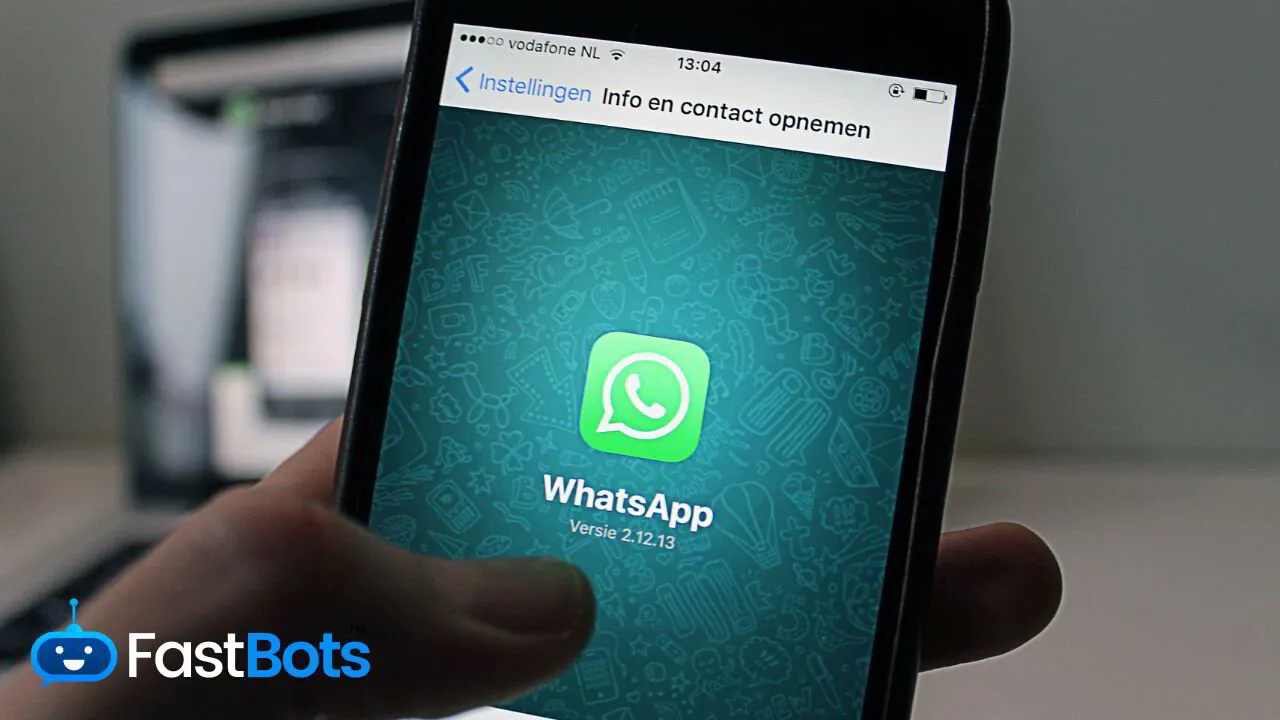Choosing the right chatbot for your business can significantly enhance customer engagement and streamline operations. If your customers primarily interact through their web browsers, a web-based chatbot might be the ideal choice. This option offers extensive design control and can be more cost-effective for businesses that do not require a messaging app.
On the other hand, if your target audience actively uses WhatsApp, leveraging a WhatsApp chatbot can provide a familiar and user-friendly experience. The vast user base of WhatsApp ensures that interactions can be more personal and immediate, fostering better engagement.
Ultimately, the choice between a WhatsApp chatbot and a web chatbot hinges on your business needs, audience preferences, and the platforms they frequent. Understanding these factors will help you select the solution that best supports your customer interactions and business goals.
BUILD YOUR OWN WHATSAPP AI CHATBOT
In less than 5 minutes, you could have an AI chatbot fully trained on your business data assisting your Website visitors.
Innovative Approaches
Combining WhatsApp and Web chatbots can lead to unique and effective customer engagement methods.
Personalised User Experiences: WhatsApp chatbots offer a more personalised interaction due to the platform's familiarity. Use rich media like images, videos, and voice notes to enhance communication.
Seamless Integration: WhatsApp chatbots integrate well with customer relationship management (CRM) systems. This helps track user interactions effectively.
On the other hand, web chatbots excel at versatility. They can be embedded across your website and provide instant customer service on every page.
Dynamic UI Elements: Implement buttons, carousels, and quick replies to guide user interactions efficiently.
Feature WhatsApp Chatbot Web Chatbot
Personal Touch High Medium
Platform Integration Seamless with CRM Flexible with various platforms
Media Richness High Medium
Versatility Limited to WhatsApp High across web pages
Hybrid Approaches: Combining both platforms can enhance the overall user experience. For instance, initiate a user query on the website and continue the conversation on WhatsApp for a better resolution.
Real-time Analytics: Leverage analytics to monitor performance. Understanding user behaviour on WhatsApp and the website helps refine chatbot strategies.
Using a mix of platforms ensures comprehensive coverage to meet diverse user needs, enhancing engagement and satisfaction.
Strategic Impact
When determining the strategic impact of implementing WhatsApp versus web chatbots, you must consider various factors such as user engagement, platform accessibility, and integration capabilities.
Assessing Outcomes
User Engagement: WhatsApp chatbots tend to foster higher engagement rates due to the familiarity and personal nature of the platform. Since users are already accustomed to using WhatsApp for daily communication, they are more likely to interact with chatbots. In contrast, web chatbots might not have the same level of personal touch but can be effective on company websites where they serve immediate customer service needs.
Platform Accessibility: WhatsApp chatbots offer ease of access through a mobile app that billions use globally. This makes it ideal for reaching a broad audience. On the other hand, web chatbots are accessible via any internet browser, offering a versatile option for users who may not have WhatsApp or prefer desktop interactions.
Integration Capabilities: WhatsApp chatbots require access to the WhatsApp Business API, which can be a limiting factor if you don't already use this platform. They integrate well with CRM systems and can automate routine tasks effectively. Web chatbots provide broader integration options due to flexible APIs and can be embedded directly into your website, providing seamless interaction with web analytics and customer service tools.
Overall, the strategic choice between WhatsApp and web chatbots should align with your specific business needs, audience preferences, and technical capabilities.
Technological Advances
The advancements in chatbot technology have significantly transformed how businesses interact with their customers. From emerging technologies to sustainable practices, these innovations have enabled more efficient and environmentally-friendly solutions.
Emerging Technologies
Various emerging technologies have propelled the capabilities of chatbots to new heights. AI and machine learning (ML) are central to these developments. They allow chatbots to understand complex queries, adapt responses based on user interactions, and improve over time through learning algorithms.
NLP (natural language processing) is another critical aspect. It breaks down user inputs to extract meaning and context, making conversations more human-like. Furthermore, integration with third-party services like CRM systems enables a more personalised experience by leveraging customer data effectively.
Voice recognition and text-to-speech technologies have enhanced accessibility, allowing users to interact with chatbots via voice commands. These technologies make the interaction more seamless, especially for users who find typing cumbersome.
Sustainable Practices
In recent years, sustainability has become a focal point in tech developments. Chatbots, including both WhatsApp and web-based versions, are contributing to this trend by reducing the need for physical resources. They minimise paper waste by digitising customer interactions.
Energy efficiency in server operations is another area where sustainable practices shine. Various datacenters are adopting renewable energy sources to power chatbot servers, minimising their carbon footprint. Additionally, optimising the code and utilising efficient algorithms can further reduce energy consumption.
The implementation of cloud computing also aids sustainability. By using scalable resources, you can efficiently manage the server load, ensuring that no energy is wasted on underutilised resources. These practices collectively make chatbots not only smarter but also greener.
Community Engagement
When it comes to community engagement, WhatsApp chatbots and Web chatbots each offer unique advantages.
WhatsApp chatbots leverage the familiarity of the messaging platform, making it easier for users to engage. Many people already use WhatsApp, which reduces friction in communication. The platform's notifications help keep the community active and involved.
Web chatbots provide a seamless experience on your website. They can engage visitors in real-time, offering instant support or guidance. You can customise web chatbots to match your brand's look and feel, maintaining a consistent user experience.
Feature WhatsApp Chatbot Web Chatbot
Platform Familiarity High engagement due to widespread use Engagement through website visits
Customisation Limited customisation options Extensive customisation is available.
User Notifications Built-in notification system It depends on website visit frequency.
Community engagement thrives on quick responses and ease of use. With WhatsApp chatbots, the direct approach can make users feel more connected to your community. This personal touch is valuable for building strong relationships.
On the other hand, web chatbots are less intrusive. They provide support when users are browsing your site, which is ideal for business-specific engagement. They also allow for more detailed data collection, such as email addresses, enabling future follow-ups.
Evaluate your community's preferences and choose the chatbot that aligns best with their needs.

Implementation and Execution
Implementing WhatsApp chatbots and web chatbots involves distinct steps and tools.
WhatsApp Chatbot:
- Create a WhatsApp Business Account: Set up your account to get access to the WhatsApp Business API.
- API Integration: Integrate the API with your backend system. This allows for seamless communication.
- Bot Design: Customise your bot. Define flowcharts, responses, and actions.
- Deployment: Deploy the chatbot and monitor its interactions.
Web Chatbot:
- Platform Selection: Choose a chatbot platform compatible with your website.
- Bot Builder Tool: Utilise drag-and-drop tools or directly code the chatbot.
- Customisation: Match the chatbot style with your brand’s design.
- Integration: Embed the chatbot script into your website’s code.
Feature WhatsApp Chatbot Web Chatbot
Platform Dependency WhatsApp Website
Customisation Moderate High
User Engagement High due to familiarity It depends on site traffic.
API Requirement Yes Optional
User Flow:
- For WhatsApp, user interactions happen within the app, keeping the experience consistent.
- For web chatbots, interactions are confined to the website.
Maintenance:
- Regular updates are necessary for both types.
- Monitor performance metrics like response times and user satisfaction to ensure consistent quality.
Frequently Asked Questions
This section addresses common inquiries about the use of WhatsApp and web chatbots, covering their benefits, differences in AI implementation, functionality, and user experience. Key considerations for choosing the right platform and steps for integration are also discussed.
What are the advantages and disadvantages of using WhatsApp chatbots compared to web chatbots?
Web chatbots provide extensive customisation options and can be integrated directly into websites, facilitating immediate access for users. They may lack the personal touch seen in WhatsApp interactions.
How does artificial intelligence differ when implemented in WhatsApp chatbots versus web chatbots?
In web chatbots, AI implementation can leverage more extensive data processing and analysis capabilities. This allows for a richer interaction that can include multimedia elements and advanced data integrations directly on websites.
In what ways do WhatsApp chatbots and web chatbots differ in functionality and user experience?
Web chatbots offer broader functionality that can include forms, surveys, and integration with other web services. The user experience is more flexible, catering to a wider array of interactions, from support to complex customer journeys.
What factors should be considered when choosing the optimal platform for chatbot deployment?
Assess the integration capabilities of each platform concerning your existing systems. Also, consider the scalability and support options offered by the platform.
What are the steps involved in integrating a chatbot into the WhatsApp platform?
Build the chatbot according to your requirements, using tools and frameworks compatible with WhatsApp. Test the chatbot extensively before going live to ensure it meets your performance and reliability standards.
How does the interaction model differ between a dedicated app and a chatbot?
Chatbots rely on natural language processing to interact with users in a conversational manner. Unlike dedicated apps, chatbots respond directly to user queries and can simulate human conversation, providing a more intuitive experience for certain tasks.
BUILD YOUR OWN WHATSAPP AI CHATBOT
In less than 5 minutes, you could have an AI chatbot fully trained on your business data assisting your Website visitors.


